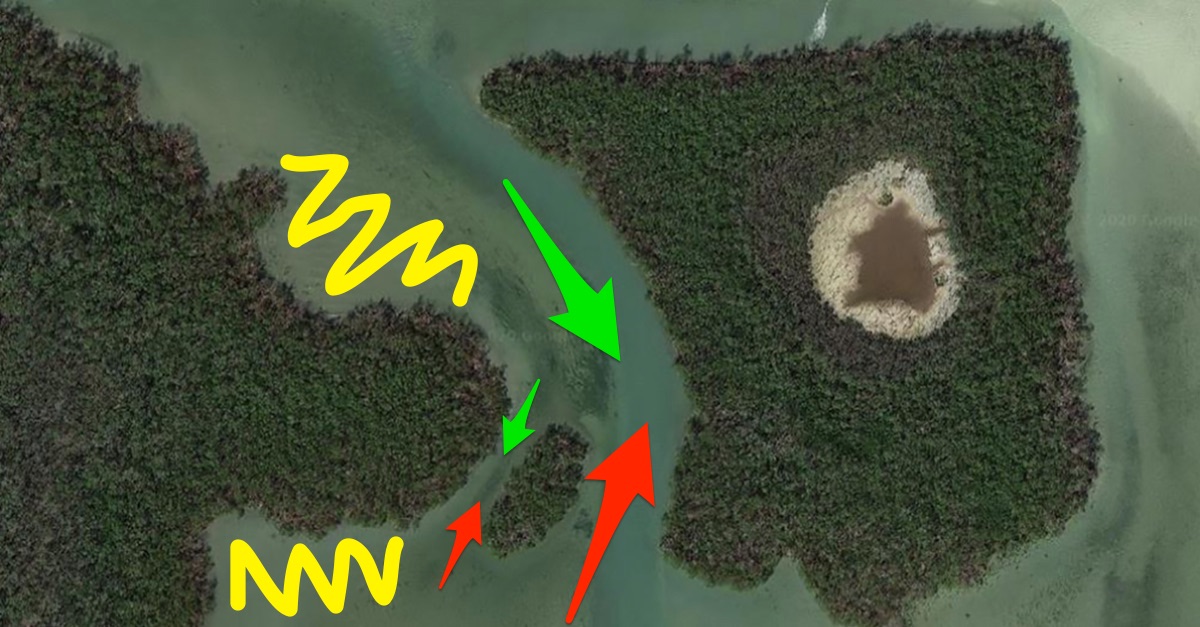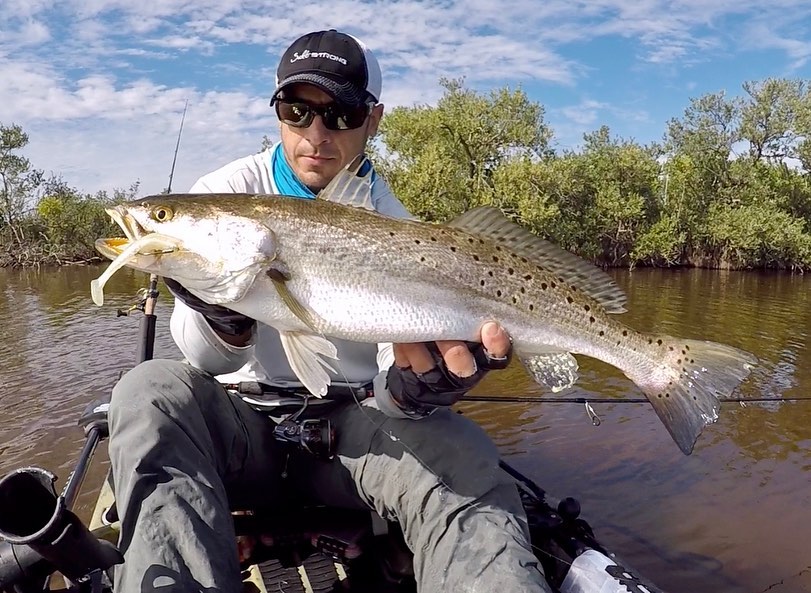How To Fish Cuts & Choke Points (For More Strikes)
- By: Tony Acevedo
- on
- Found In: Fishing Tips, Inshore Fishing, WEEKLY NEWSLETTER: 8-16-20

Fish are lazy.
They have to be in order to survive.
It costs them a lot of energy to hunt down a meal so they do all they can to make it easier on themselves.
Now one of the best ways for them to get an easy meal is to let the current bring it to them.
In areas like the cut pictured above, fish will sit on the bottom, out of the strongest current, and wait for a baitfish or crustacean to be swept by the current into their waiting jaws.
So how do you position your boat and your bait to trick fish into thinking you’ve given them an easy meal?
See how in the video below.
Enjoy!
P.S. How you position your boat is different for artificial lures vs. live bait and I’ll cover both, so be sure to watch the whole thing.
How To Fish Choke Points & Cuts [VIDEO]

When fishing choke points and cuts you need to consider which direction the fish are facing.
The fish are looking for food to come to them, so they’re looking up current.
If you want to maximize the number of fish you catch, you’ll need your bait or lure to be moving in the same direction as the current so that the fish will see it and it will look natural.
How to fish choke points with live bait
If you’re using live bait, you want to position your boat up current and toss your bait down current.
Then, open the bail and let your bait drift naturally down with the current.
This will make it look most natural and works with both live and cut bait.
How to fish choke points with lures
If you’re using artificial lures, you want to position your boat down current and toss your bait up current.
Then, retrieve your lure with the current.
This is usually the best approach, but sometimes the wind will be blowing in the same direction as the current, making this plan much more complicated.
In these cases, you can use your lure just like you would live bait.
Position your boat up current and then let it drift through the cut with the current, giving it the occasional twitch.
If you’re doing this, just make sure to use a weight light enough that it isn’t staying still on the bottom, and heavy enough that it’s staying close to the bottom.
Conclusion

Cuts and pinch points are some of the best places to catch fish because the current brings food to the predators waiting in ambush.
Just make sure that your bait or lure is moving in the same direction as the current to make it look more natural.
Have any questions about fishing cuts?
Let us know in the comments below.
And if you want more videos like this where we break down fishing spots and strategies on online maps, then you’ll love our Insider Club’s weekly spot dissections.
Every Monday I get on online maps and dissect a spot from Texas to Florida to Virginia showing where the best places to fish are.
As an Insider, you’ll also get access to our Insider reports where do spot dissections and then go out and fish them and show you what worked and what didn’t.
Plus, you’ll also get discounts to our online tackle store.
Click here to learn more about the Insider Club.
Related articles:
Related categories:
STOP WASTING TIME ON THE WATER!
Do what the “SMART ANGLERS” are doing and join the Insider Club.
Here’s what you’ll receive today when you join:
- Weekly fishing reports and TRENDS revealing exactly where you should fish every trip
- Weekly “spot dissection” videos that walk you through all the best spots in your area
- Exclusive fishing tips from the PROS you can’t find anywhere else
- Everything you need to start catching fish more consistently (regardless if you fish out of a boat, kayak, or land).










In areas where current is running really hard, 3-5 knots at times up here in SC, I’ve learned to let that live bait drift, and fish with the current with the bail open to make it east to feed it line, palming the spool/line when needed to pop a cork or set a hook. Can help you keep from getting in that situation when fishing a cork that the bait just swings right up the surface behind the cork with the current of you happen to come too tight on the line in a drift.
Yep definitely the way to go when using live bait.